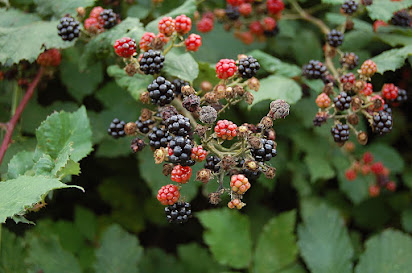Blackberry Vines: The Unseen Fire Risks Lurking in Your Garden in Victoria, BC
Blackberry bushes, with their plump, juicy fruits, can be a tempting addition to any garden. But these pervasive plants, have a less appetizing aspect: they pose a significant fire hazard. Despite their aesthetic appeal and the lure of fresh berries, it is crucial to understand why blackberry vines should be controlled or completely removed from your garden to mitigate fire risks.
1. Dense Thickets and Fast Growth:
One characteristic that makes blackberry vines a fire hazard is their rapid growth and tendency to form dense, impenetrable thickets. These thorny tangles can quickly cover vast areas, crowding out other plant species and creating a large mass of flammable material. In dry conditions, these dense thickets can quickly turn into kindling, providing a ready fuel source for wildfires.
2. Dead and Dry Material Accumulation:
As blackberry bushes grow, older canes die off, creating a buildup of dry, dead material within the thicket. This dead vegetation is highly flammable, especially during periods of dry weather or drought. The dense nature of blackberry thickets also makes it difficult to remove this dry material, leading to an increasing accumulation of potential fire fuel over time.
3. Barrier to Fire Control:
The dense, thorny growth of blackberry bushes can act as a barrier, making it difficult for firefighters to access areas affected by fire. This delay can provide fires more time to spread, exacerbating the damage caused.
4. Impact on Native Vegetation:
Invasive blackberry vines can outcompete native vegetation, leading to a reduction in plant biodiversity. Many native plants have adaptations that make them more resistant to fires or contribute to a lower fire risk. By reducing these species' presence, blackberry bushes can indirectly increase a garden or landscape's overall fire risk.
Removal and Management:
Due to these factors, removing blackberry bushes from your garden becomes crucial in fire-prone areas. The task can be challenging due to their vigorous growth and sharp thorns. For smaller infestations, manual removal can be effective. Cutting the bushes back and digging up the root ball can prevent regrowth.
For larger infestations, you may need a more intensive approach, potentially involving herbicides or professional help. After removal, monitor the area regularly for signs of new growth, as blackberry bushes can regrow from remaining roots or overlooked stem pieces.
Conclusion:
Although blackberry bushes can provide tasty fruits and habitat for wildlife, their rapid growth, creation of dense, dry thickets, and inhibitive nature during firefighting efforts make them a significant fire hazard. Therefore, if you live in an area with a high fire risk, it's advisable to remove blackberry vines from your garden or maintain them meticulously to prevent excessive growth. After all, protecting your property and the surrounding environment should take precedence over enjoying those juicy summer blackberries.
.jpeg)



Comments
Post a Comment